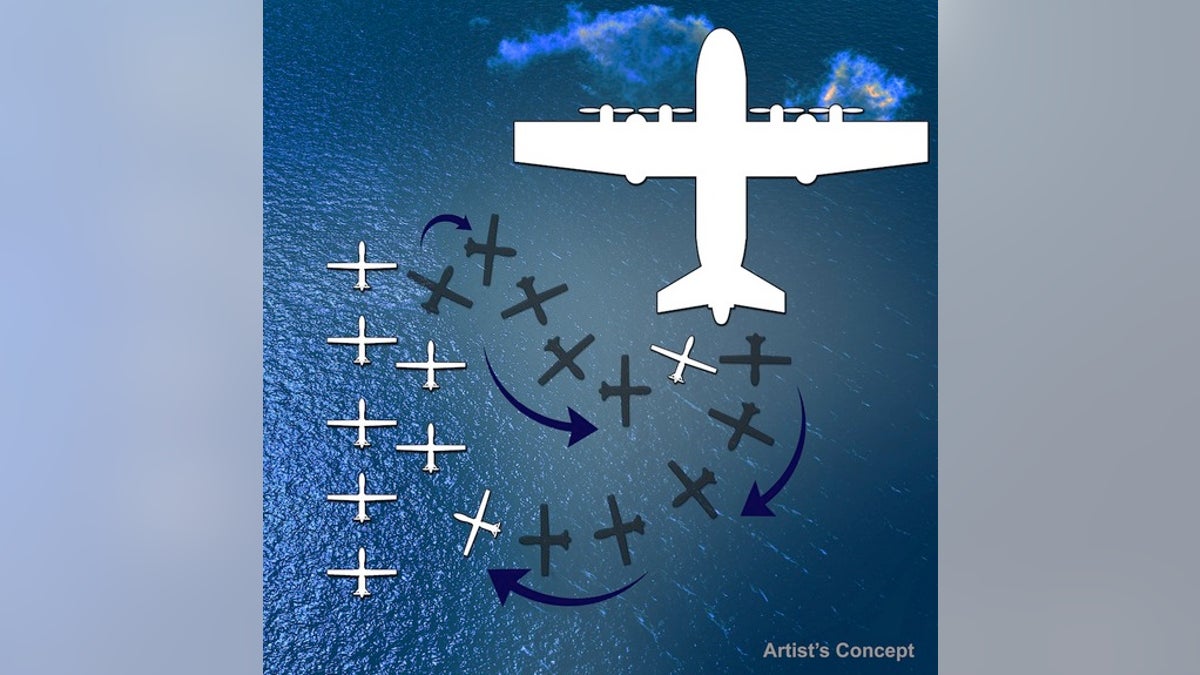
Artist's conception of drones being deployed from a transport aircraft. (DARPA)
The U.S. military wants to develop flying aircraft carriers to transport drones in and out of surveillance zones.
The Defense Advanced Research Projects Agency (DARPA) is seeking ideas from companies on how to launch drones from huge transport planes, such as the massive C-130 planes that ferry troops and cargo to and from the battlefield..
Drones are cheaper and less risky to fly than manned aircraft, but their range and speed limitations prevent them from being used for some missions. Deploying them from an aircraft midflight would address some of these problems, DARPA said, and could improve surveillance, reconnaissance and intelligence-gathering missions. [7 Technologies That Transformed Warfare]
"We want to find ways to make smaller aircraft more effective, and one promising idea is enabling existing large aircraft, with minimal modification, to become 'aircraft carriers in the sky,'" Dan Patt, DARPA program manager, said in a statement.
"We envision innovative launch and recovery concepts for new [drone] designs that would couple with recent advances in small payload design and collaborative technologies."
DARPA's proposal calls for a system that would allow military officials to reuse the launch platform multiple times, and could be used to retrieve the drones after they are deployed. To lower costs and minimize risk, DARPA envisions modifying existing transport planes to carry drones.
There are multiple payoffs, DARPA officials say, including safer missions for people, reducing the cost of deployments (since drones would be used instead of pilots) and technological advances.
"DARPA hopes to leverage significant investments in the area of precision relative navigation, which seeks to enable extremely coordinated flight activities among aircraft, as well as recent and ongoing development of small payloads (100 pounds or less)," agency officials said.
Companies submitted proposals last month, and DARPA said flight-ready prototypes could be ready in four years.
Copyright 2014 LiveScience, a TechMediaNetwork company. All rights reserved. This material may not be published, broadcast, rewritten or redistributed.




















